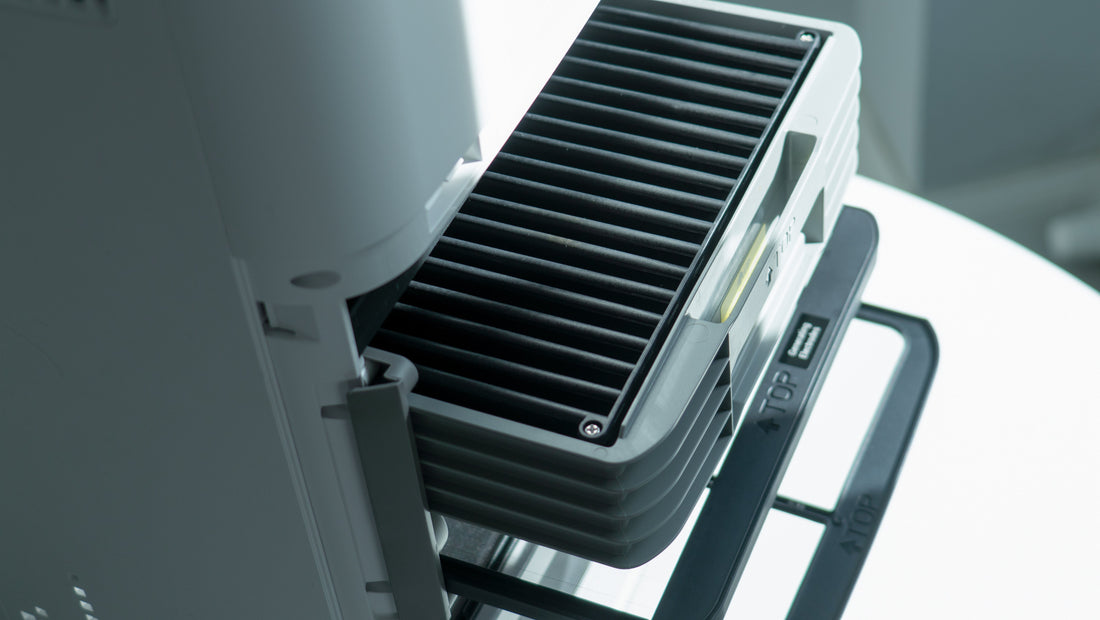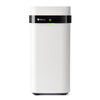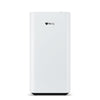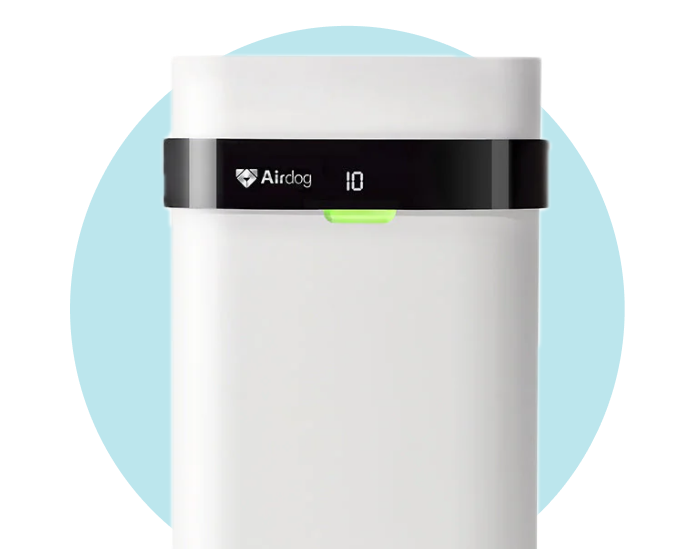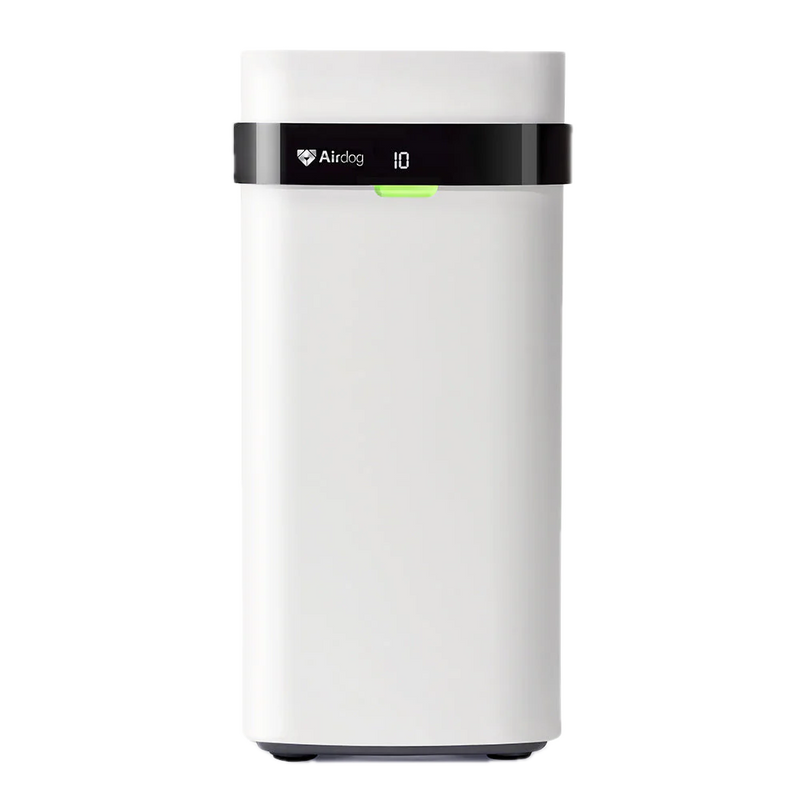Maintaining your air purifier can significantly impact both your home's air quality and your device's longevity. Many homeowners overlook regular maintenance, especially when it comes to filters, which trap dust, pollen, and other airborne particles. Neglecting filter care can lead to reduced purification performance and a shorter lifespan for your device.
This guide dives into the essentials of air purifier maintenance, focusing on filters. You’ll learn about HEPA, activated carbon, pre-filters, and Airdog TPA filters, their unique roles, and why proper upkeep matters. Plus, we’ll answer one of the most common questions: can you vacuum air purifier filters?
Understanding Air Purifier Filters
Diving into the world of air purifiers, one quickly realizes the centrality of filters to the overall effectiveness and efficiency of these devices. Regular maintenance is not just a recommendation; it's a requirement for ensuring your living space benefits from the highest quality air. Here's what you need to know:
Different Filters for Different Functions
-
HEPA Filters: Capture 99.97% of particles as small as 0.3 microns, including dust mites, pet dander, and pollen. HEPA filters cannot be washed or vacuumed.
-
Activated Carbon Filters: Absorb odors and gases for a fresher environment.
-
Pre-Filters: Catch larger particles to extend the life of HEPA or carbon filters. Some pre-filters are washable or vacuumable.
-
Airdog TPA Filters: Airdog purifiers use Two-Pole Active (TPA) filtration to remove ultrafine particles as small as 0.0146 microns. These collection plates are washable and do not require vacuuming, making maintenance simpler and more effective.
The Importance of Regular Maintenance
Neglecting filter care reduces air quality and purifier efficiency. Cleaning or replacing filters on schedule is crucial to maintaining performance.
Can You Vacuum Air Purifier Filters?
When it comes to maintaining air purifiers, one of the most frequently asked questions is: can you vacuum air purifier filters? This common question depends on the type of filter you have.
Washable vs. Non-Washable Filters
-
Washable Filters: Certain air purifiers come equipped with filters designed to be washed, typically pre-filters. These can be gently cleaned with water to remove accumulated dust and debris.
-
Non-Washable Filters: HEPA and some carbon filters should never be vacuumed. Their delicate fibers can tear, reducing effectiveness.
-
Airdog Filters: Designed differently, Airdog’s TPA collection plates are washable, not vacuumable, and capture ultrafine particles, bacteria, and viruses. This makes maintenance safer and simpler than traditional HEPA filters.
Benefits of Vacuuming Pre-Filters
-
Extends filter life for washable pre-filters.
-
Cost-effective, reducing frequent replacements
Drawbacks for Non-Washable Filters
-
Risk of damage and reduced filtration efficiency.
-
Limited effectiveness on deeply embedded particles.
Step-by-Step Guide to Safely Vacuuming Washable Filters
For traditional washable pre-filters:
-
Turn off and unplug the device.
-
Gently remove the filter.
-
Use a soft brush attachment on low suction.
-
Glide over the surface with consistent strokes, focusing on folds and crevices.
-
Inspect for wear and reinstall securely.
Maintenance Schedule: Vacuum washable pre-filters every two weeks; monitor performance for unusual airflow or noise.
Alternatives for Non-Washable Filters
When it comes to maintaining air purifier filters that cannot withstand vacuuming, finding safe and effective cleaning methods is essential. These alternatives not only preserve the integrity of non-washable filters but also ensure they continue to perform their vital role in purifying your indoor air.
-
Tapping: Gently knock loose dust into a trash bin.
-
Compressed Air: Use controlled bursts to sweep away debris.
-
Manufacturer Guidelines: Always follow instructions to prevent damage or voiding warranty.
Knowing When to Replace Air Purifier Filters
Maintaining the efficiency of your air purifier involves more than just cleaning; it requires timely filter replacements.
Visible Damage
-
Tears or Holes: Inspect the filter for any physical damage. Even small tears or holes can drastically reduce a filter's effectiveness by allowing polluted air to bypass the filtration system entirely.
-
Warping: Filters that appear warped or misshapen from moisture or improper handling also require replacement. A warped filter cannot fit snugly within the air purifier, compromising the seal and filtration capacity.
Persistent Odors
-
Unpleasant Smells: A filter that can no longer neutralize odors is a clear sign that it needs replacing. Over time, activated carbon filters, responsible for odor absorption, become saturated and lose their effectiveness.
-
Odor After Cleaning: If a washable filter still smells after being cleaned, this indicates that it's no longer capable of performing its function to its full capacity.
Decreased Air Purifying Performance
-
Reduced Airflow: A significant decrease in airflow often points to a clogged filter. When air cannot pass through as easily as before, it's time for a replacement.
-
Increased Allergy Symptoms: Notice if there's an uptick in allergy symptoms among household members. It could be a sign that the air purifier isn't capturing allergens efficiently anymore, due to a filter that needs replacing.
Closing: Effortless Clean Air with Airdog
Now that you know which filters can safely be vacuumed and which require more delicate care, maintaining your air purifier becomes much easier. Regularly inspecting, cleaning, or replacing filters ensures your device continues to trap dust, allergens, and other pollutants efficiently, keeping the air in your home healthy.
Following these steps also helps you answer the question: can you vacuum air purifier filters? For washable pre-filters, vacuuming is a safe, cost-effective option. For non-washable HEPA or carbon filters, stick to gentle cleaning methods or timely replacements to avoid damaging the filter and reducing performance.
For a simpler, low-maintenance approach, Airdog purifiers offer washable collection plates and real-time air quality feedback, so you can monitor results without guesswork while keeping your indoor air clean and comfortable.
FAQs and Troubleshooting Common Issues
Maintaining your air purifier may seem simple, but small nuances can affect both performance and air quality. Here are answers to common questions and tips for troubleshooting to keep your purifier running effectively.
How Often Should I Check My Air Purifier's Filter?
Inspect your filter every 2–4 weeks. The exact timing depends on air quality and how often the purifier runs. Watch for visible dust buildup, reduced airflow, or increased noise—these are signs the filter may be clogged.
What Happens If I Use a Damaged Filter?
A damaged filter can’t trap pollutants effectively, reducing your indoor air quality. Running the purifier with a compromised filter may also strain the motor, potentially causing more significant issues or device failure.
Can I vacuum my Airdog filter?
Airdog purifiers use TPA collection plates, which are washable and do not require vacuuming. Simply rinse the plates with water for safe and effective maintenance.

